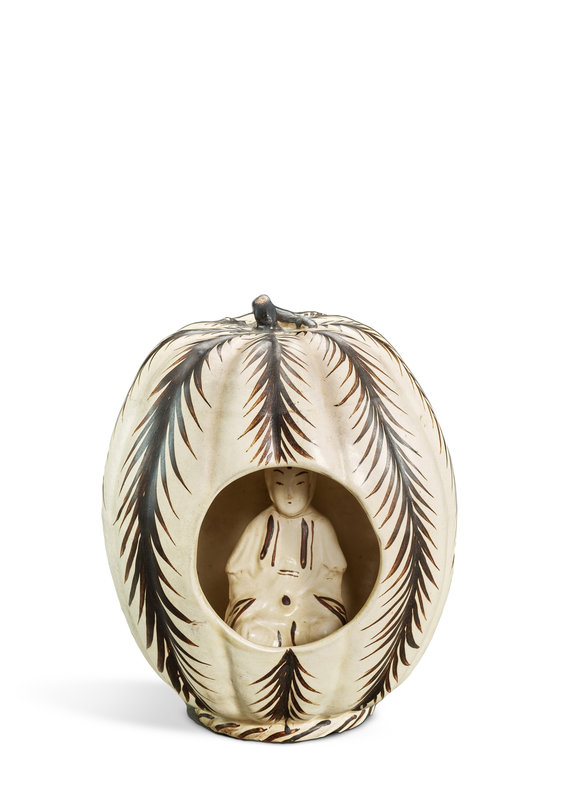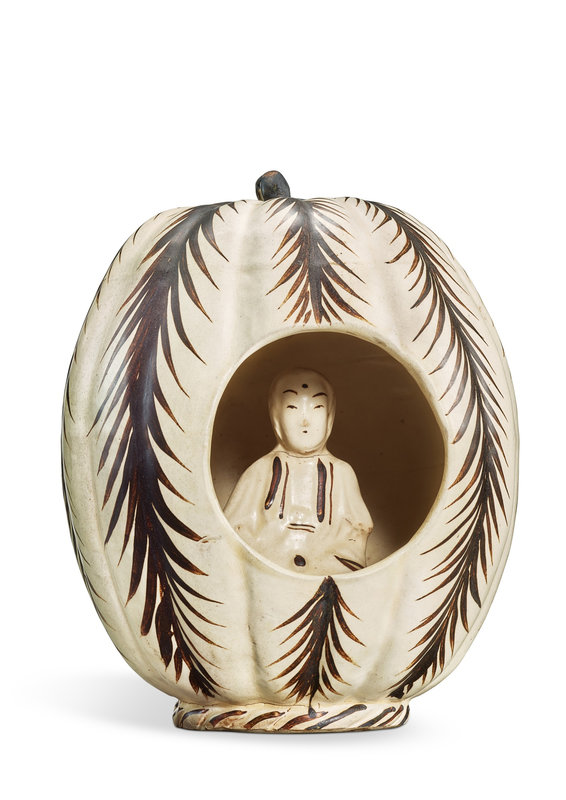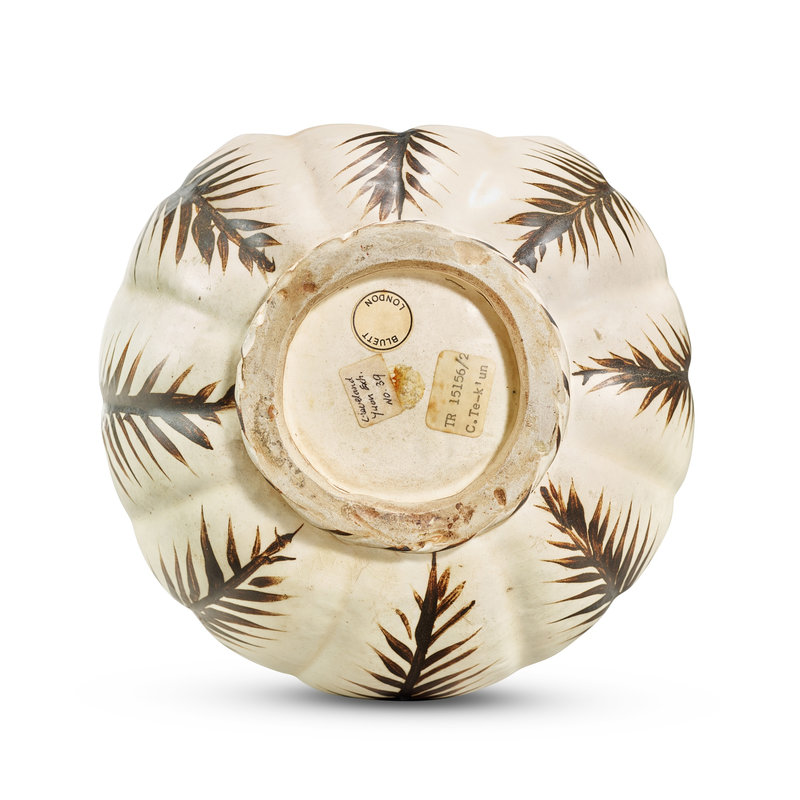A very rare Cizhou 'Buddhist figure in a gourd-shape grotto' group, Jin-Yuan dynasty
Lot 3650. Property from the Xinyangtang Collection. A very rare Cizhou 'Buddhist figure in a gourd-shape grotto' group, Jin-Yuan dynasty (1115-1368); 21.7 cm. Lot Sold 825,500 HKD (Estimate 500,000 - 700,000 HKD). © Sotheby's 2023
Provenance: Bluett, London (label).
Collection of Dr Cheng Te-k'un (1908-2001).
An important Asian private collection.
Sotheby's Hong Kong, 5th November 1996, lot 672.
Exhibited: Chinese Art Under the Mongols: The Yuan Dynasty (1279-1368), Cleveland Museum of Art, Ohio, 1968, cat. no. 39.
Note: This stoneware Buddhist shrine is a delightful creation from the Cizhou kilns and is ostensibly unique due to a stark lack of comparable peers. It is ingeniously potted in the shape of an open gourd with a religious figure seated inside, possibly an image of Bodhisattva or a Buddhist deity as suggested by the urna on its forehead. The figure is depicted in a deep meditative state, emanating an aura of calmness and serenity, encased in a secluded, private sphere and shielded from external distractions by the protective gourd. The gourd itself is a widely recognized symbol closely associated with Buddhism. The vines and tendrils of the gourd sprawl and stretch out across the earth, alluding to the dissemination of Buddhism with the Dharma spreading far and wide; with a combination of time and care, the vines will be laden with ripe fruits which symbolize the attainment of enlightenment.
It was ingenious for Cizhou potters to combine two designs that they were familiar with to create a new composition. While Cizhou figurines are relatively common, they are typically free-standing and not attached to another structure. Known for their creativity, the potters ingeniously incorporated a figurine into a gourd - the latter of which was a widely adopted design which was prevalent among twelfth to thirteenth-century wares as the body of practical utensils like jars or ewers, but rarely ever as a shrine or grotto as seen on the present piece.
Its provenance can be traced back to Dr Cheng Te-k'un (1908-2001), an esteemed archaeologist revered as the father of archaeology of the Sichuan Basin, who also built up the Mu-fei Library at the University of Cambridge and founded the Centre for Chinese Archaeology and Art at the Chinese University of Hong Kong. The present shrine was featured in the Cleveland Museum of Art exhibiton in 1968 and was first offered for sale at Sotheby's Hong Kong in 1996, with notable mention in the catalogue introduction describing it as "an eccentric piece". Since its sale, it has been kept and duly cared for in the Xinyangtang collection for nearly three decades.
Sotheby's. Important Chinese Art, Hong Kong, 9 October 2023

/https%3A%2F%2Fprofilepics.canalblog.com%2Fprofilepics%2F1%2F0%2F100183.jpg)
/https%3A%2F%2Fstorage.canalblog.com%2F03%2F02%2F119589%2F96711876_o.jpg)
/https%3A%2F%2Fstorage.canalblog.com%2F11%2F31%2F119589%2F94773502_o.jpg)
/https%3A%2F%2Fstorage.canalblog.com%2F20%2F83%2F119589%2F94772815_o.jpg)
/https%3A%2F%2Fstorage.canalblog.com%2F26%2F72%2F119589%2F75604929_o.jpg)
/https%3A%2F%2Fstorage.canalblog.com%2F59%2F60%2F119589%2F26458628_o.jpg)





/image%2F1371349%2F20240502%2Fob_bd3c09_telechargement-4.jpg)
/image%2F1371349%2F20240502%2Fob_046c62_telechargement.jpg)
/image%2F1371349%2F20240412%2Fob_032fb1_2024-nyr-22642-0928-000-a-rare-painted.jpg)
/image%2F1371349%2F20240406%2Fob_9dfc32_43940a1f-2ced-406a-946b-752cdf1507aa-0.jpg)